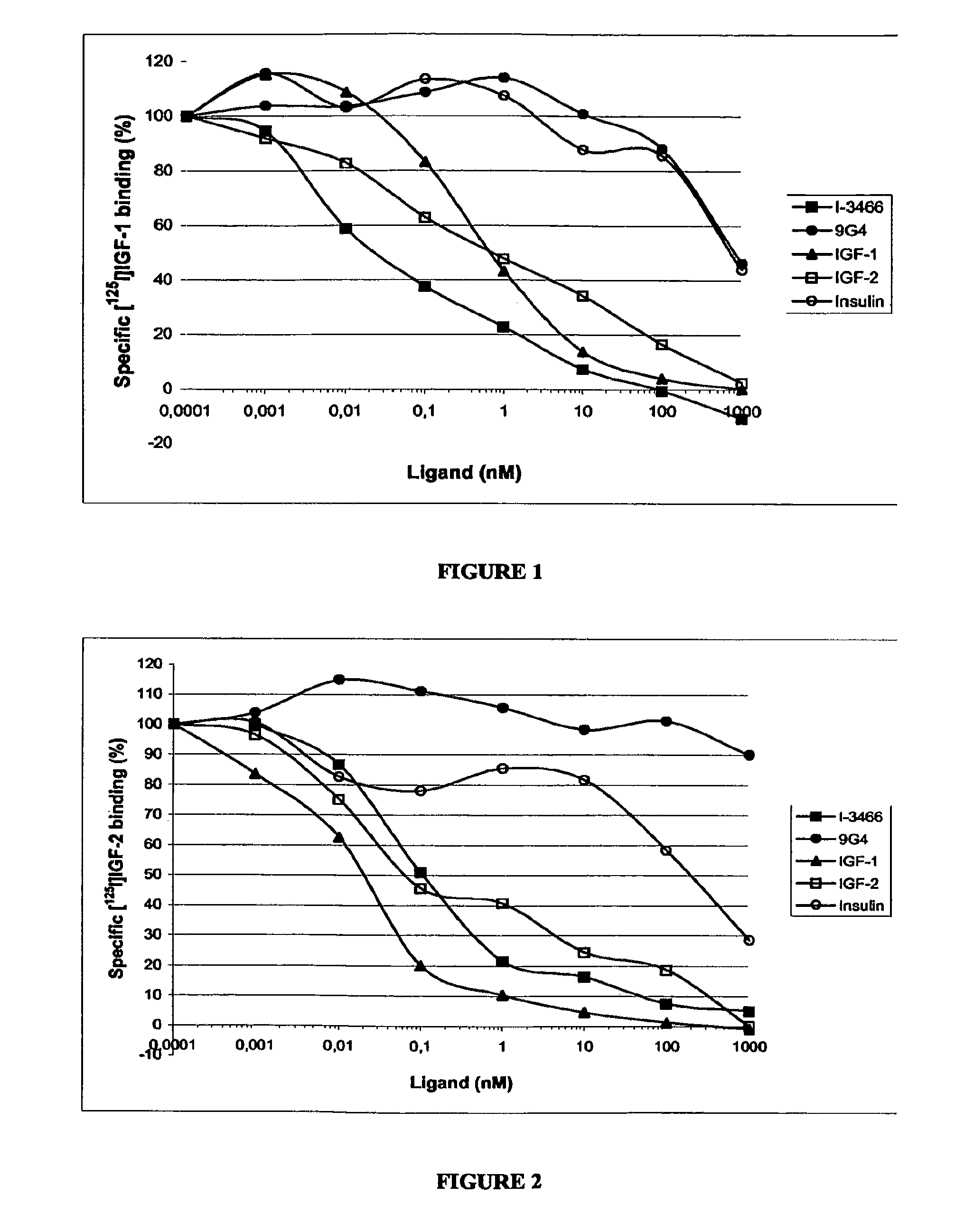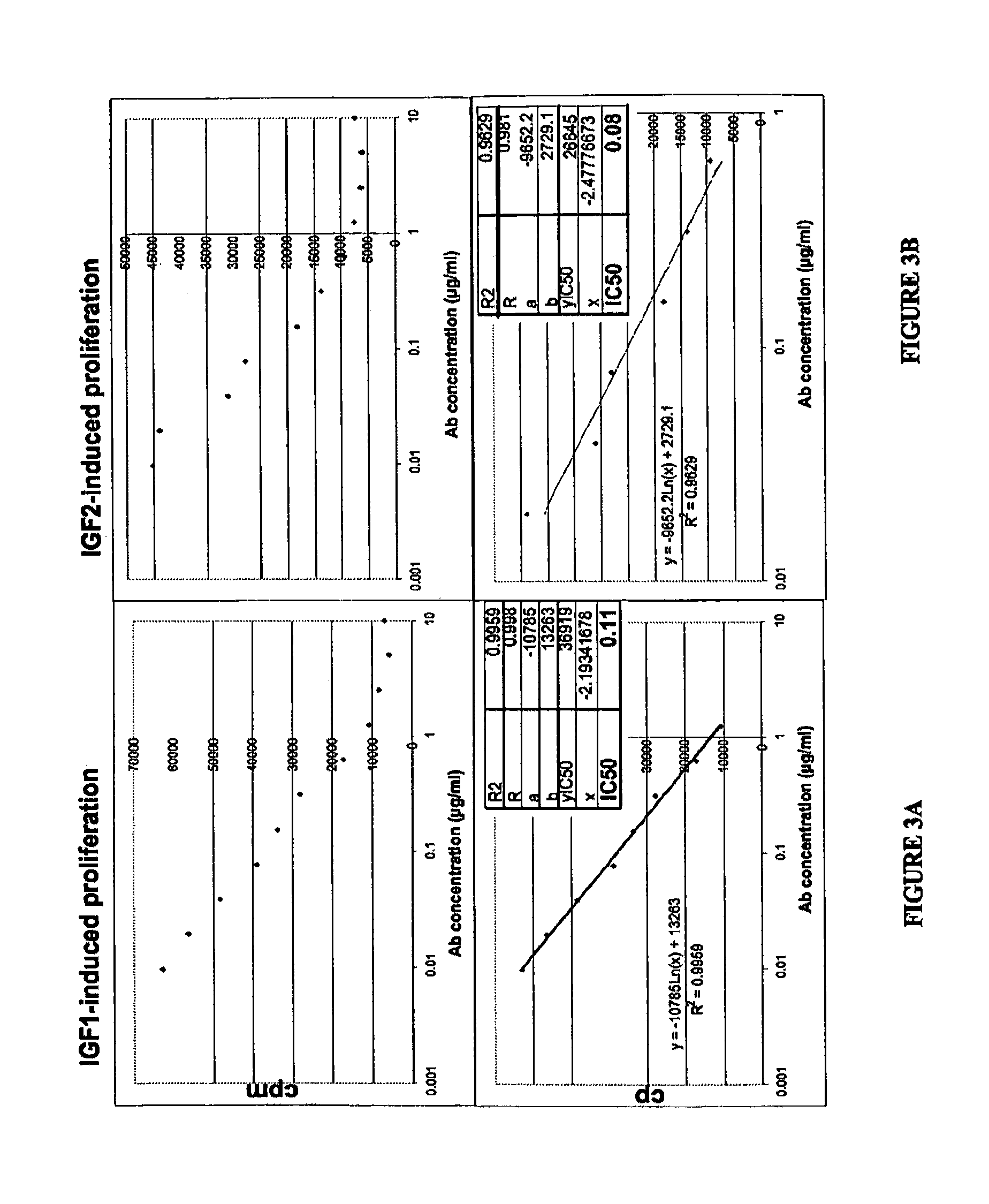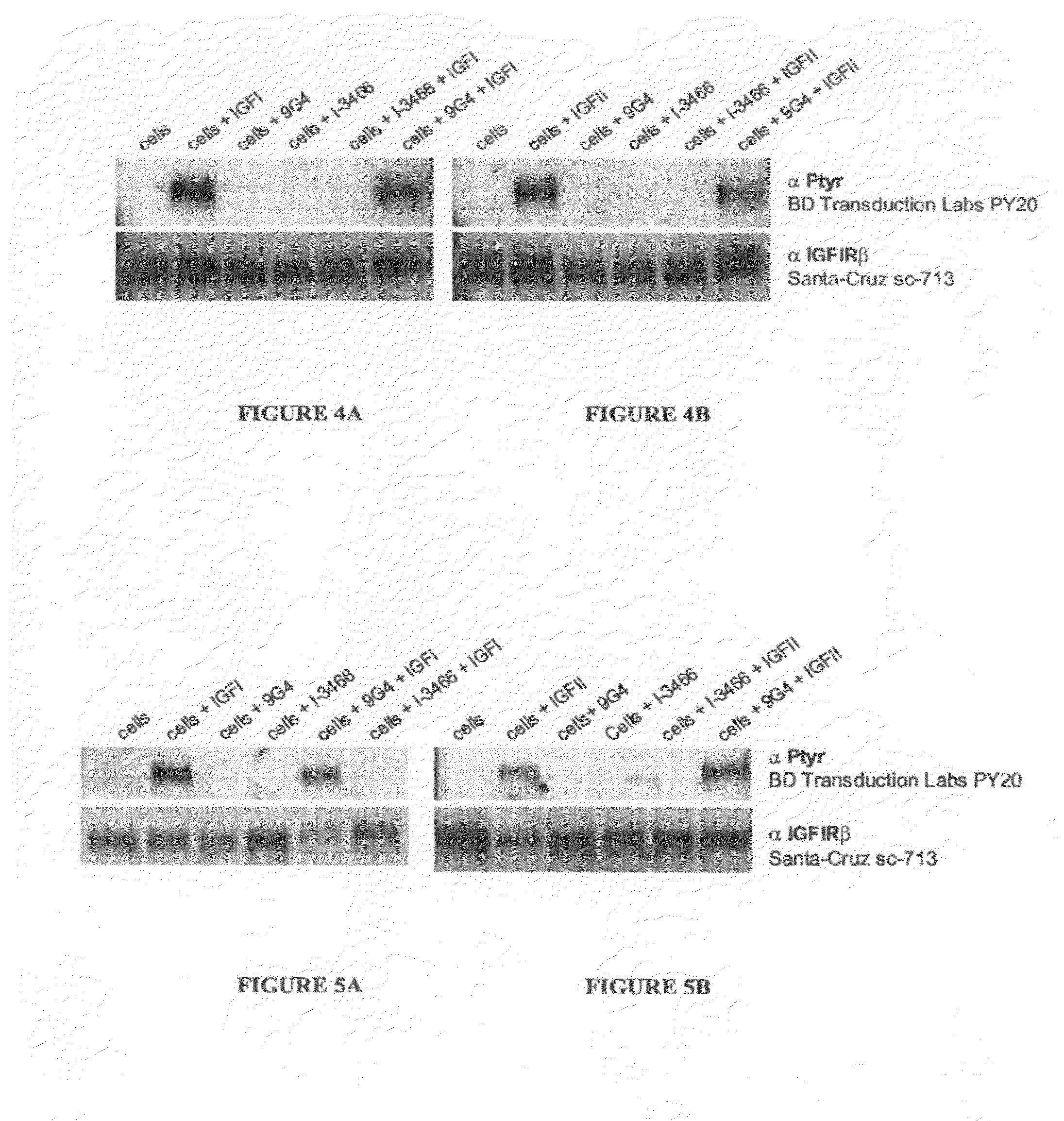Anti-IGF-IR antibodies and uses thereof
a technology of anti-igf-ir antibodies and antibodies, which is applied in the field of anti-igfir antibodies, can solve the problems of insufficient specification of these applications, data on competition binding being suspicious, and no clear indication that these antibodies are capable of inhibiting efficiently the binding of both natural ligands. and other problems, to achieve the effect of inhibiting the in vitro growth of cell lines
- Summary
- Abstract
- Description
- Claims
- Application Information
AI Technical Summary
Benefits of technology
Problems solved by technology
Method used
Image
Examples
example 1
Generation and Selection of the Murine Monoclonal Antibody (MAb)
[0238]With the aim of generating MAb specifically directed against IGF-IR and not recognizing the IRK a protocol comprising 6 screening stages was performed.
[0239]It consisted in:[0240]immunizing mice with human recombinant IGF-IR, in order to generate hybridomas,[0241]screening the culture supernatants by ELISA on the recombinant protein which served for immunization,[0242]testing all the supernatants of hybridomas positive by ELISA on the native receptor overexpressed on the surface of MCF-7 tumor cells,[0243]performing binding experiments to select antibodies recognizing specifically IGF-IR,[0244]verifying that the antibodies selected at this stage were capable of inhibiting in vitro the induced IGF1 proliferation of the MCF-7 cells,[0245]ensuring the in vivo activity, in nude mice, of the candidate retained in terms of impact on the growth of the tumor MCF-7.
[0246]All of these different stages and results obtained w...
example 2
Inhibition of [125I]-IGF1 and [125I]-IGF2 Binding to Human IGF-1 Receptor
Preparation of Membrane Lysate
[0248]NIH 3T3 cells stably transfected with the human IGF-IR cDNA were grown in DMEM supplemented with 10% of fetal calf serum After detachment by scraping, serum-starved cells were further collected by centrifugation. The cell pellet was washed with phosphate buffered saline and resuspended in lysis buffer: 10 mM Tris-HCl pH 7.5 buffer containing protease inhibitors. Approximately 1 ml of buffer was added to 25.106 cells. Cells were further lysed by 3 freeze-thawing cycles followed by 30 strokes of a Potter homogeniser at 1,900 rpm. After sonication, nuclei and large cell fragments were discarded by centrifugation at 1,000 g for 15 min at +4° C. Total cell membranes were obtained by centrifugation at 105,000 g for 1 h at +4° C. The membrane pellet was washed in lysis buffer and centrifuged at 105,000 g for 1 h at +4° C. The final pellet was resuspended in 50 mM Tris-HCl buffer con...
example 3
In Vitro Effect of the I-3466 Antibody on Either IGF1 or IGF2-Induced MCF-7 Growth
[0253]As indicated above, IGF-IR is overexpressed by numerous tumors but it has furthermore been described that in a significant number of breast and colon cancers, the proliferation signal is given to this receptor via IGF2 (sometimes written IGF-2, IGF-II or IGFII). It is therefore essential to ensure that the MAb I-3466 is likewise capable of inhibiting both the IGF1 and the IGF2-induced growth on MCF-7 cells in vitro. In order to do this, cells were plated into 96-well plates at a density of 5×104 cells / well in 200 μl of serum free medium (phenol red free-RPMI medium plus 1% L-Glutamine). Twenty four hours after plating, either IGF1 at a final concentration of 50 μg / ml (6.6 nM) or IGF-2 (final concentration of 100 ng / ml (13.2 nM)) was added to MCF-7 cells either in presence or in absence of I-3466 or a murin non neutralizing anti-IGF-IR antibody (7G3) used as an isotype control for nearly 52 additi...
PUM
| Property | Measurement | Unit |
|---|---|---|
| pH | aaaaa | aaaaa |
| temperature | aaaaa | aaaaa |
| temperature | aaaaa | aaaaa |
Abstract
Description
Claims
Application Information
 Login to View More
Login to View More - R&D
- Intellectual Property
- Life Sciences
- Materials
- Tech Scout
- Unparalleled Data Quality
- Higher Quality Content
- 60% Fewer Hallucinations
Browse by: Latest US Patents, China's latest patents, Technical Efficacy Thesaurus, Application Domain, Technology Topic, Popular Technical Reports.
© 2025 PatSnap. All rights reserved.Legal|Privacy policy|Modern Slavery Act Transparency Statement|Sitemap|About US| Contact US: help@patsnap.com



